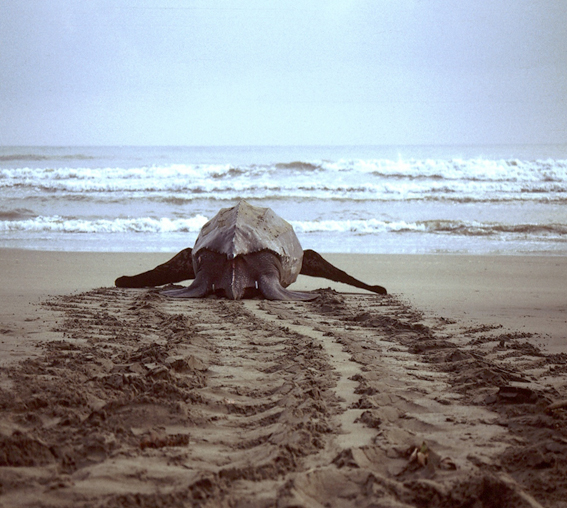Sea turtles are vertebrates with temperature-dependent sex determination. Rising temperatures due to climate change cause female-biased sex ratios. Here, the influence of nest depth and shading conditions on nest temperatures and hatchling fitness of the leatherback sea turtle Dermochelys coriacea have been assessed. Forty-eight leatherback clutches were relocated into a hatchery in 2013, 2014 and 2015, respectively. Of these, 24 clutches were placed under shade conditions and 24 were placed under unshaded (sun) conditions at three depths (50, 75, 90 cm). Fitness (as measured by greater carapace length, carapace width and hatchling weight) and locomotion performance (faster crawling and shorter righting responses) were better in leatherback hatchlings from the cooler, shaded nests than in those from the warmer, unshaded nests. In 2013, in clutches at a depth of 50 cm, hatching success was higher for the shaded clutches than for the unshaded clutches, while in clutches at deeper depths unshaded clutches had higher hatching success than shaded clutches. These results show that shaded conditions produced hatchlings with a higher fitness and a higher likelihood of being male. Therefore, results can be used to provide conservation policies with a tool to decrease the current female-skewed sex ratio production caused by rising temperatures at most nesting rookeries around the world. informacion[at]ebd.csic.es: Rivas et al (2019) Potential male leatherback hatchlings exhibit higher fitness which might balance sea turtle sex ratios in the face of climate change. Clim Chang https://doi.org/10.1007/s10584-019-02462-1
https://link.springer.com/article/10.1007%2Fs10584-019-02462-1

 Las altas temperaturas están provocando que las lagunas y las marismas de Doñana pierdan agua rápidamente
Las altas temperaturas están provocando que las lagunas y las marismas de Doñana pierdan agua rápidamente




